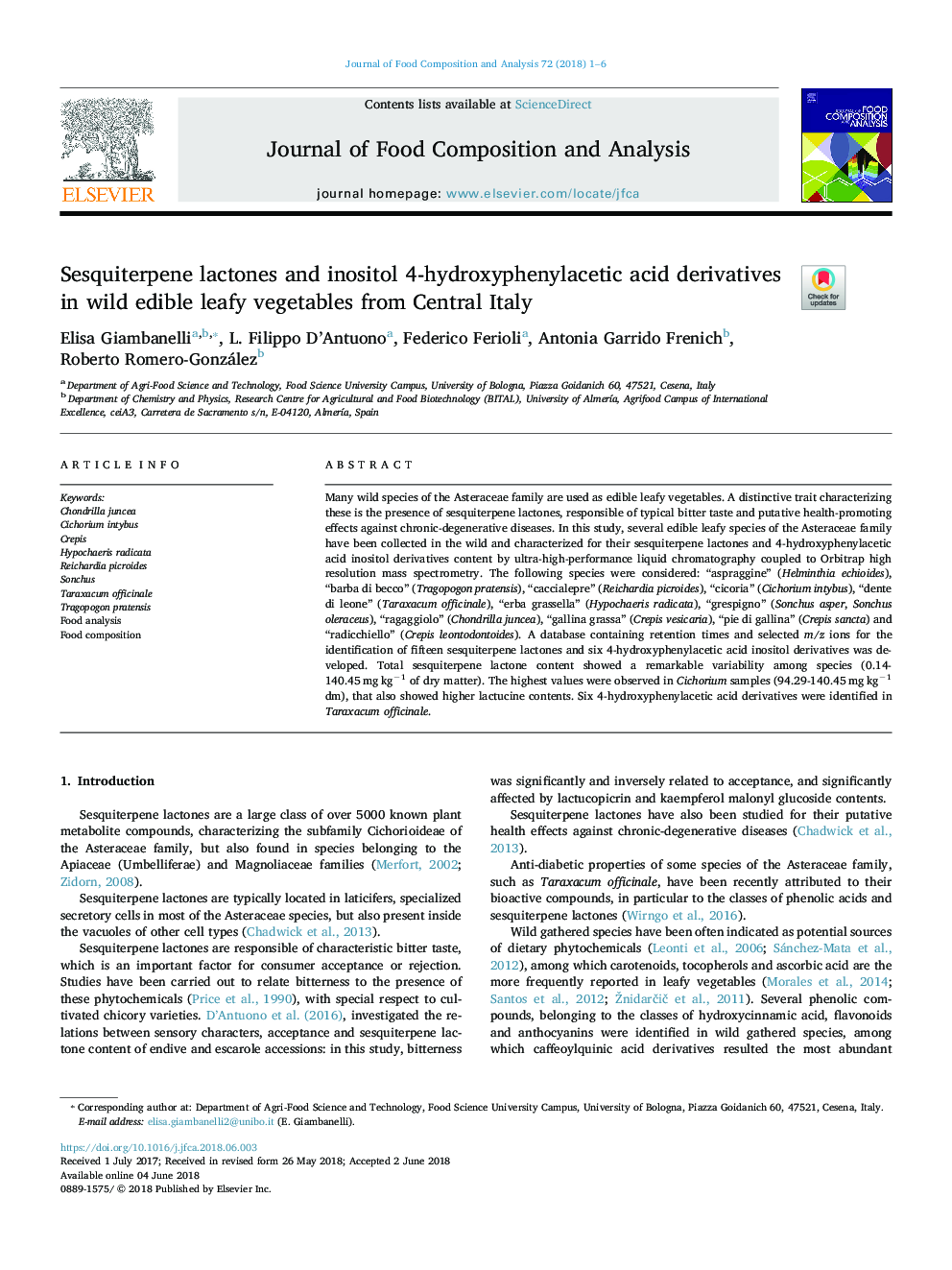| Article ID | Journal | Published Year | Pages | File Type |
|---|---|---|---|---|
| 7619510 | Journal of Food Composition and Analysis | 2018 | 6 Pages |
Abstract
Many wild species of the Asteraceae family are used as edible leafy vegetables. A distinctive trait characterizing these is the presence of sesquiterpene lactones, responsible of typical bitter taste and putative health-promoting effects against chronic-degenerative diseases. In this study, several edible leafy species of the Asteraceae family have been collected in the wild and characterized for their sesquiterpene lactones and 4-hydroxyphenylacetic acid inositol derivatives content by ultra-high-performance liquid chromatography coupled to Orbitrap high resolution mass spectrometry. The following species were considered: “aspraggine” (Helminthia echioides), “barba di becco” (Tragopogon pratensis), “caccialepre” (Reichardia picroides), “cicoria” (Cichorium intybus), “dente di leone” (Taraxacum officinale), “erba grassella” (Hypochaeris radicata), “grespigno” (Sonchus asper, Sonchus oleraceus), “ragaggiolo” (Chondrilla juncea), “gallina grassa” (Crepis vesicaria), “pie di gallina” (Crepis sancta) and “radicchiello” (Crepis leontodontoides). A database containing retention times and selected m/z ions for the identification of fifteen sesquiterpene lactones and six 4-hydroxyphenylacetic acid inositol derivatives was developed. Total sesquiterpene lactone content showed a remarkable variability among species (0.14-140.45â¯mgâ¯kgâ1 of dry matter). The highest values were observed in Cichorium samples (94.29-140.45â¯mgâ¯kgâ1 dm), that also showed higher lactucine contents. Six 4-hydroxyphenylacetic acid derivatives were identified in Taraxacum officinale.
Keywords
Related Topics
Physical Sciences and Engineering
Chemistry
Analytical Chemistry
Authors
Elisa Giambanelli, L. Filippo D'Antuono, Federico Ferioli, Antonia Garrido Frenich, Roberto Romero-González,
